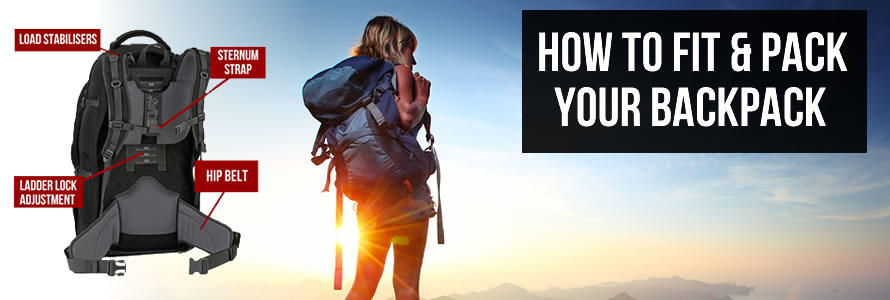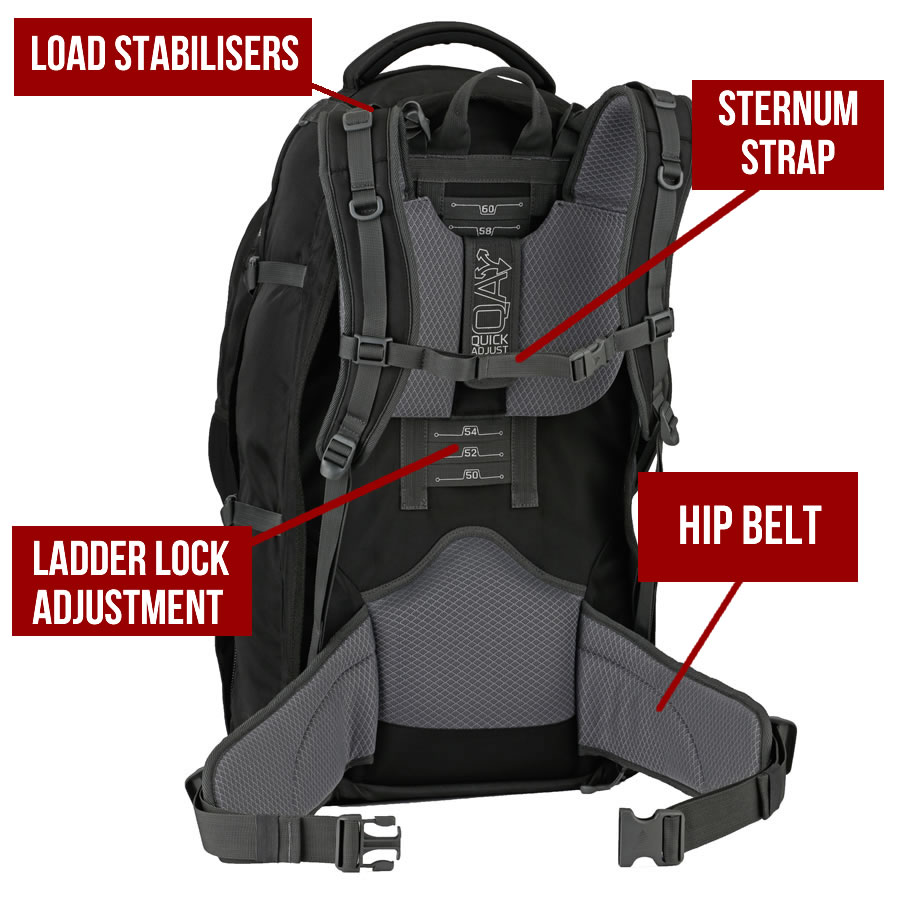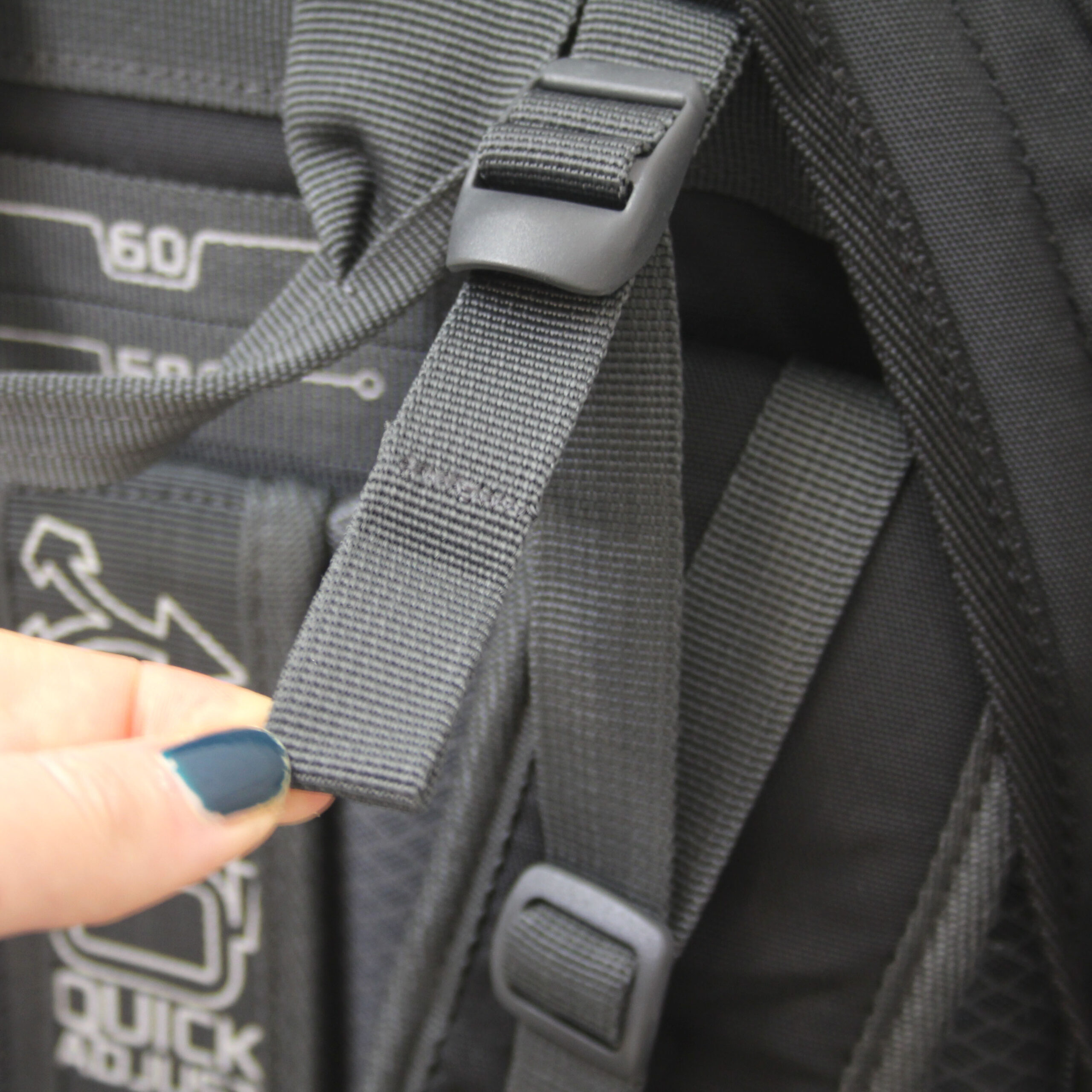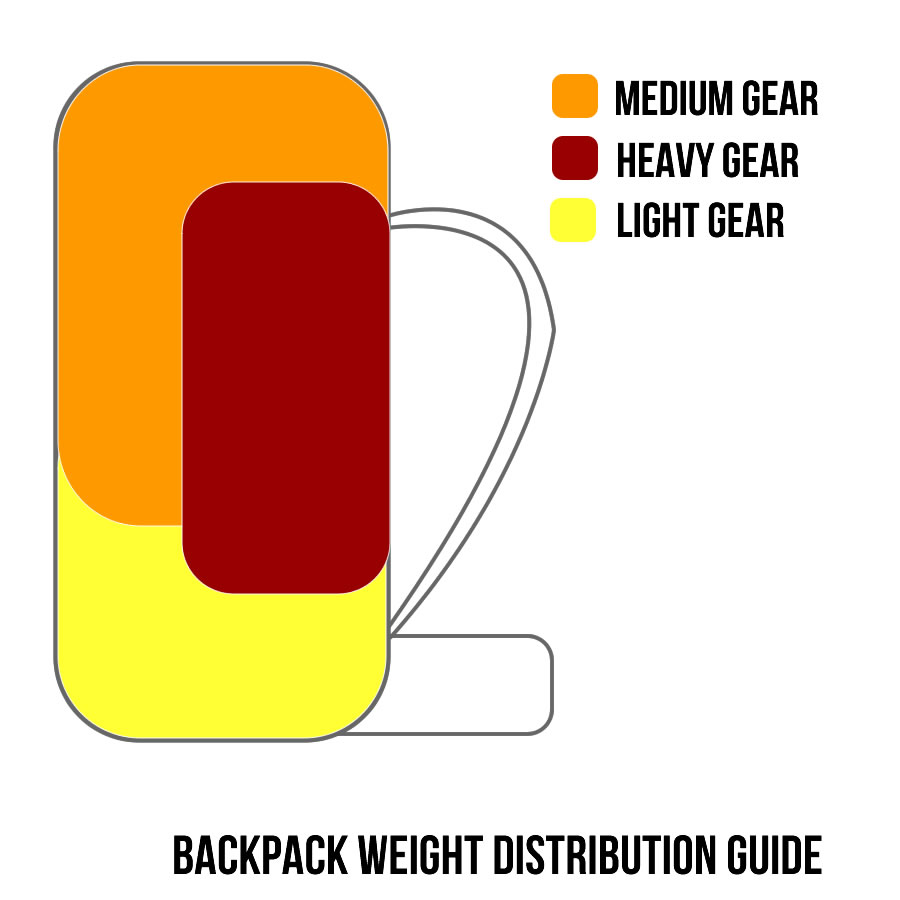Surely you can just throw your backpack on your back, tighten the shoulder straps and you’re good to go? WRONG. Once backpacks get out of daypack and small backpack sizing (approximately 15-40 litres) you’ll find that they come with more advanced back systems, which can be adjusted. Ensuring your backpack has been adjusted correctly before use is extremely important when it comes to carrying comfort, support and prevention of injury, and the good news is that once you’ve adjusted your backpack to the correct fit, you shouldn’t have to do it again!
We always recommend fitting your backpack correctly in plenty of advance, you don’t want to be doing this the night before or even on the day of departure, as you’d end up with little choice other than to embark on your travels with an ill-fitting pack if it turns out to be a bad fit. How you distribute the weight of your luggage inside your backpack will also play a part in how comfortable it is, so we’ll also discuss this at a later point.
How to Fit a Backpack
We’re aware that different manufacturers use different styles of adjustable back system, but for the purpose of this guide, we’re going to explain how to fit a backpack based on the common ‘ladder lock’ adjustment, which features several loops at different heights and a velcro adjustment tab.
1) Ensure that all the straps and hip belt are unclipped and loosened ready for fitting.
2) Consider your torso length and use the velcro adjustment tab to move the shoulder straps up (this will extend the back length for taller users) or down (this will shorten the back length for women and shorter users). The velcro tab will pass through the different ladder loops and can be secured once you’ve found the right length for you. You may have to play around a little bit as you may not get the correct back length straight away.
3) Put the backpack on your back and place the hip belt over your hips. Ensure that the hip belt is positioned on the illiac crest (hip bones), then tighten it to provide a secure fit, but make sure it doesn’t dig in. Once the hip belt is in place, pull down on the shoulder adjustment straps located at the bottom of the shoulder straps. They should feel comfortable and fit securely to your shoulders, but they should not be holding the weight of the backpack, this should be directed to your hips.
4) Ensure that the shoulder straps are pulling the backpack towards your back and not backwards, as this will cause imbalance and could result in injury to your back. Most backpacks come with load stabiliser straps, which are located between the top of the backpack and the top of the shoulder straps, as they connect the back of the backpack to the shoulder straps. If your backpack comes with stabiliser straps, pull down on these to pull the load forwards and onto your hips, aim to adjust the stabiliser straps to an angle of around 45 degrees and check there isn’t too much of a gap behind the shoulder straps. If you do have a gap, you can loosen the stabiliser straps slightly to try and adjust this, otherwise the pack can end up rubbing and causing discomfort, as well as not providing the correct support.
5) Next, you will need to adjust the sternum(chest) strap. On many packs you’ll find that this can be slid up and down on the shoulder straps and you should aim to position it in line with the bottom of the arm pit area. You can also loosen it if it feels too tight across your chest. The purpose of the sternum strap is to keep the shoulder straps in place and stop them sliding around when you’re carrying the backpack.
6) Once you have adjusted the sternum strap and load stabilisers, you can go back to the shoulder straps and slightly loosen them to release more of the backpack’s weight down to the hip area. If the weight already feels as though it is being carried on the hips, then you don’t need to adjust the shoulder straps.
How to Pack a Backpack
As previously mentioned, the weight distribution inside your backpack plays a big part in how well it fits. It is recommended that when packing your backpack, you place heavier items in a higher centralised position against the back of the backpack, between the shoulder blades. Items with a medium weight should be packed towards to front and top of the backpack and light items should be packed at the bottom of the backpack. Below is a diagram of where you should position your luggage inside your backpack.




